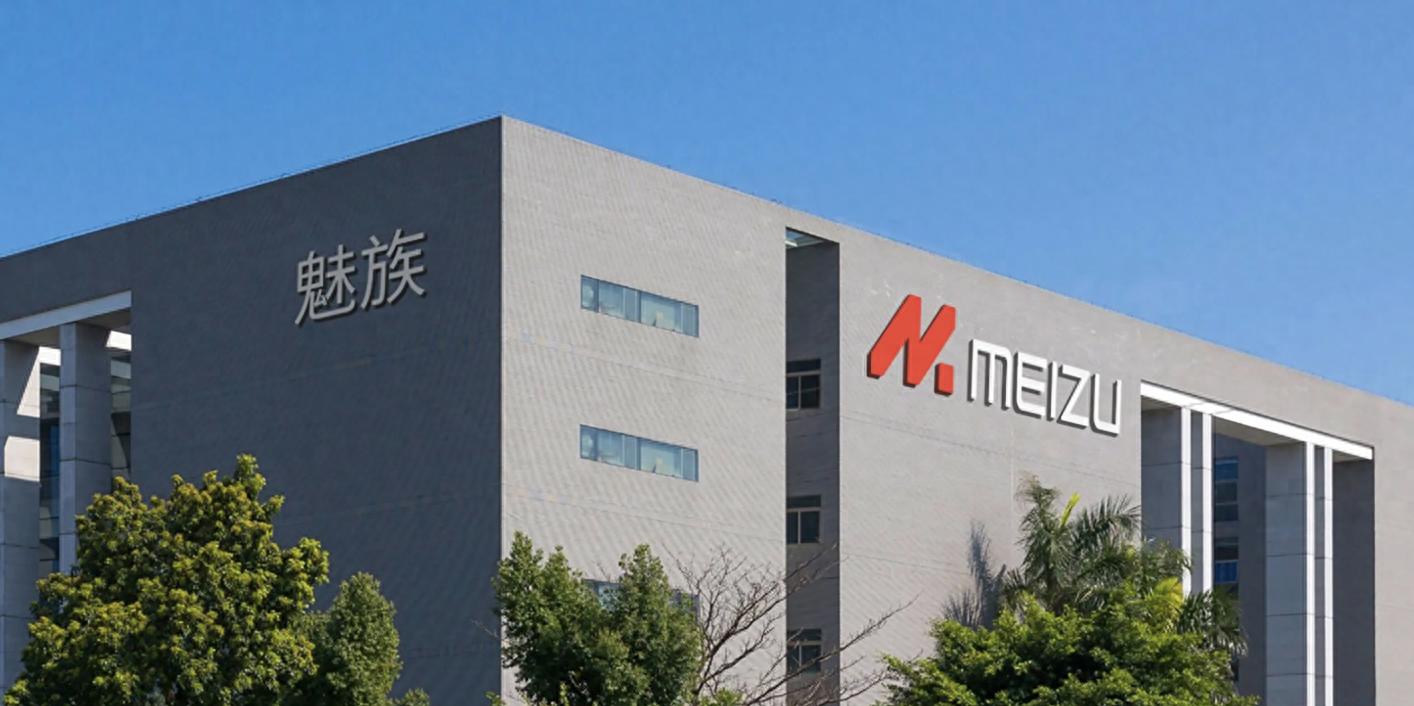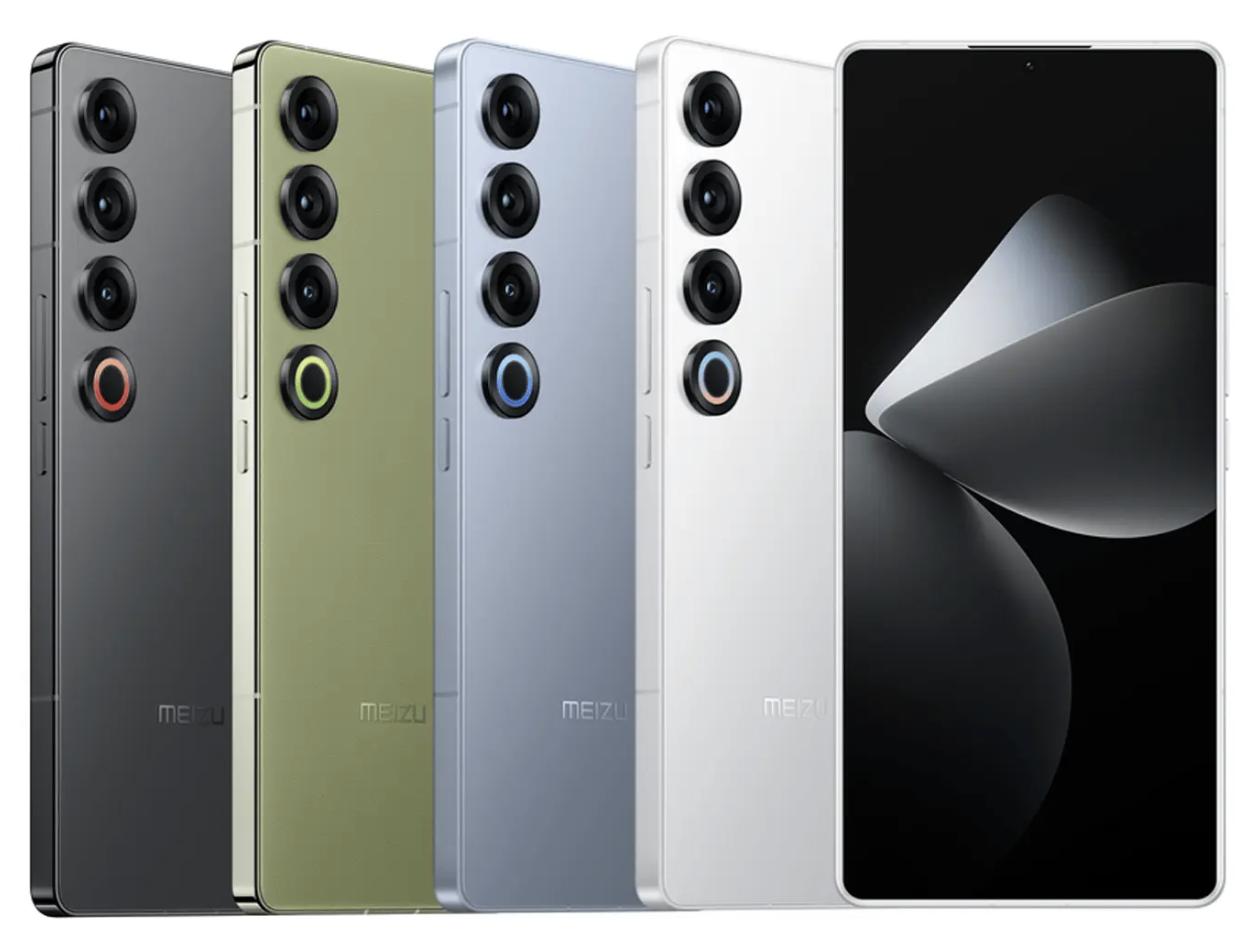Meizu's 'Blood Change' Strategy: Navigating Unstable Smartphone Terrain, Hopes to 'Reshape Destiny' with AI and Automotive Ventures
![]() 06/22 2025
06/22 2025
![]() 494
494
Author | He Wei
Source | Beiduo Finance
Since its acquisition by Geely, Meizu has gradually shifted its focus to nurturing the AI domain.
After officially announcing its transition to 'All in AI' in February 2024 and committing to refraining from launching traditional smartphones, this once design-centric phone manufacturer has placed its bets on AI terminals, AR glasses, and smart cockpit systems for the upcoming phase. It aims to revitalize its brand through AI. Its Flyme Auto has swiftly expanded across Geely-series models, and AIOS emphasizes end-cloud collaboration, indeed demonstrating early-mover advantages and a firm commitment to execution.

Image from Meizu's official website
However, when Meizu's initial batch of AI phone devices hit e-commerce platforms, reality swiftly provided feedback: significant buzz but lackluster sales. The purported 'AI transforming destiny' narrative seems to have reverted to the original premise where smartphone sales dictate everything. For Meizu, which still aspires to alter its fate through AI, does it face a promising future or the peril of falling behind?
I. AI 'Transforming Destiny', Smartphones Remain the Cornerstone
Public information reveals that Meizu was among the first domestic smartphone manufacturers to propose a complete shift towards AI. It wasn't a passive follower but an active participant, and can be deemed an 'early adopter' in the AI smartphone breakthrough battle.
As a brand once renowned for its system design and interactive experience, Meizu has demonstrated robust product consciousness and innovative prowess in multiple stages of smartphone development. Meizu's AI transformation also upholds its consistent technocratic idealism.
From abandoning traditional smartphone projects to focusing on constructing an end-cloud collaborative AI system, its stance is unequivocal and its direction is clear. Nonetheless, no matter how radical the strategic choice, it must be implemented on the foundation of real business entities. For Meizu, this entity remains the smartphone, the primary touchpoint for the Flyme AIOS landing experience, and the core entry point for its AI ecosystem to engage users. For Meizu to breakthrough in the AI arena, can it regain its footing in the established smartphone landscape?
Strategically, it is indeed one of the earliest domestic smartphone manufacturers to initiate an AI transformation at the system architecture level. Flyme AIOS not only integrates the interface but also introduces large models, multi-device collaboration mechanisms, and local intelligent assistant capabilities at the system's foundation. In terms of functionality, it emphasizes 'learning while using' and endeavors to replace traditional human-computer interaction methods with semantic recognition and multimodal perception.
However, technocratic idealism can forge a vision, but without the backing of the user market, even the finest system is a castle in the air. Since 2024, major smartphone manufacturers have released new generations of smartphones equipped with edge-side large model capabilities, encompassing scene capabilities such as AI call summaries, image generation, and semantic understanding, alongside comprehensive hardware and software collaborative optimization. In this realm, although Meizu proclaimed 'All in AI' early, the actual user experience in landing scenarios did not create a generational advantage.
More pragmatically, consumers' expectations for AI phones are no longer merely about the presence of features but about their convenience and ease of use. This implies that when users upgrade their phones, they not only peruse conference PPTs but also compare response speed, stability, and whether it's 'smart' enough in practical use. This is precisely where Meizu is currently struggling. The tuning of AI capabilities must be built on a vast amount of user usage data, and Meizu's current market share is still insufficient to support such a data foundation.
For Meizu to propel the implementation of the AI ecosystem, it must first stabilize its smartphone business and boost sales. Whether it's end-cloud scheduling, semantic processing, or multi-device collaboration, smartphones are invariably the primary touchpoint for traffic entry and user perception. Technological concepts ultimately need to be validated and optimized by the scale of smartphone users. In the construction of the AI ecosystem, smartphone sales are not merely a revenue indicator but also a source of training samples, system feedback, and architectural innovation. If this foundation is not solid, the AI capabilities of terminals and scenarios will also struggle to run smoothly.

Image from JD.com APP screenshot
Judging from the sales of Meizu's AI phones on the JD.com APP, aside from three models priced between 759 and 884 yuan with sales ranging from 20,000 to 40,000 units, the sales of other models are average. On JD.com's 'Meizu Official Flagship Store', its 'Lucky 08 AI Lucky Phone' has sales of 400+. This is not on par with the sales of AI-enabled models from top brands, which generally exceed 100,000+. From this perspective, while Meizu chose to reshape its smartphone products through AI, a proactive move, returning to the mainstream position in the smartphone market hinges not only on direction and courage but also on how to entice people to buy and how many people buy.
II. Can AR Glasses and Cars Sustain a Grand Ecosystem
After announcing its AI strategy, Meizu did not merely focus on building AI phones but envisioned a 'future territory' encompassing AR glasses, smart cockpit operating systems, and even the entire vehicle ecosystem. This is a strategic grand slam that extends from device forms to ecological structures and is also a crucial path for Meizu to 'reshape destiny'. In this blueprint, AR glasses and cars become two ambitious fulcrums for Meizu.
From laying the groundwork in the AR racetrack to the launch of StarV Air2 smart glasses, Meizu attempts to identify a second carrier for AI beyond smartphones. This path does possess vision from a strategic standpoint. The future of AI terminals doesn't necessarily remain tethered to smartphones, especially against the backdrop of continuous breakthroughs in multimodal perception and natural language interaction. New devices with perceptual input, instant response, and wearable attributes might become the next mainstream. And Meizu is one of the earliest domestic brands to integrate AR glasses into the AI ecosystem and introduce them to the consumer market. This forward-thinking product layout has, to some extent, conferred it first-mover advantages.
However, the challenges are also quite real. The AR glasses market is still in its nascent stages, with immaturity in terms of wearing comfort, functional experience, application ecosystem, and consumer awareness. More critically, the higher price point makes it difficult to generate significant sales in the short term. Moreover, AR glasses also require large-scale user data for continuous training and optimization. A small quantity implies that this endeavor is more of an exploration than a revenue driver. Compared to AR, cars hold greater potential.
Since being acquired by Geely, Meizu has been making steady progress in the automotive operating system realm. Its Flyme Auto has swiftly been integrated into Geely, Lynk & Co, and Yinhe models. Data shows that as of March 2025, the cumulative sales of models equipped with Flyme Auto have surpassed 918,000 units, with 310,000 new users in March alone. From a data perspective, Flyme Auto is emerging as the first substantial component of Meizu's 'AI transforming destiny' narrative, with its frequent OTA updates, exceptional voice interaction experience, and rich mobile phone interconnection functions, constituting a certain competitiveness.
Yet, this achievement cannot obscure its underlying risks. The rapid growth of Flyme Auto relies on the shipment support of the Geely system. This means that its ecological potential energy is built on the premise of binding internal platforms within the group, and its independent brand influence and commercial monetization capabilities are still relatively limited. Additionally, in the smart cockpit racetrack, HarmonyOS, NIO, Xpeng, Li Auto, Xiaomi, and others are continuously optimizing iterations or even reconstructing from the ground up. If Meizu aims to achieve cross-vendor ecosystems and establish itself as an AI ecosystem platform provider, it still needs to confront multi-dimensional challenges such as computing power, model capabilities, chips, and algorithms.
By wagering on AR and cars, Meizu demonstrates its ambition to redefine boundaries, but this 'reshaping destiny' bet still prioritizes vision at the capital level. If it cannot consistently enhance user value and construct an ecological closed loop, it might still remain a tale rather than a functional model. Whether the next station of the AI ecosystem can sustain Meizu's future hinges not on what is released but on how many people can actually utilize it.
III. On the Trend, Falling Behind Becomes the Greatest Variable
AI is no longer a differentiated label but a new point of competition in the market. When nearly all smartphone manufacturers are reconstructing systems and product experiences with AI at the core, Meizu's real test is no longer whether it can lead but how to carve out a distinctive path. The reason why 'reshaping destiny' has become a keyword is precisely because Meizu, in a marginal position, cannot afford to lag behind again in its rush towards AI.
As Huawei, Xiaomi, OPPO, and Vivo continue to fortify AI foundations, models, functions, and experiences, Meizu endeavors to use Flyme AIOS as a base to connect multiple terminals such as smartphones, AR glasses, and smart car infotainment systems. This blueprint itself possesses a clear sense of direction and is even ahead of other manufacturers in certain dimensions. However, the real-world challenge is that if it aims to breakthrough through ecological integration, the premise is to build a robust barrier based on each node.

Image from Meizu's official website
Whether it's the scale of smartphone sales, the practical usage scenarios of AR glasses, or the high-frequency reach of the in-car system, if a stable closed loop has yet to be formed, when competitors continuously refresh standards in AI model tuning and end-cloud collaborative experience, its current technology accumulation and user base might still struggle to form a leading edge in the market.
From the current stage, what Meizu faces is not an imagination problem from 0 to 1 but an execution problem from 1 to 100. In this round of increasingly intense smart hardware competition marked by homogeneity, what truly determines Meizu's destiny has never been whether it possesses AI but whether AI can deliver practical, unique, and user-recognized value. If not, then even if every product bears an AI label, it cannot avoid falling behind again in the tide.
Meizu's transformation is not devoid of determination. It took an early step in the AI smartphone domain, and its in-car system has also been implemented on a large scale, demonstrating actions beyond its size in the reconstruction of AR devices and operating systems. For Meizu, such a strategic leap is worthy of recognition, particularly amid significant industry changes. The issue isn't 'whether it wants to change' but whether it has the resources to propel the change to the level of market perception.
If ecological construction is difficult to close the loop, user perception is limited, and brand potential energy is insufficient, then this unavoidable reality will inevitably become a 'stumbling block'. And the risk of 'falling behind' has never been about whether to transform but whether the transformation can hit the right rhythm, penetrate value, and stand firm. Each step of Meizu now appears to possess foresight but actually requires verification. What truly determines its destiny might not be whether AI can 'reshape destiny' but whether the market is willing to grant it more chances.
Meizu once walked ahead, indeed one of the earliest smartphone manufacturers to propose a systematic AI strategy, daring to discontinue traditional product lines and pivot to the nascent battlefield of intelligent terminals, backed by a sense of trend judgment and strategic determination. Precisely because of this, the risk of this transformation doesn't lie in seeing the direction but in whether the path can be made viable. In today's market, early layout is no longer sufficient to build barriers. The key lies in whether strategic advantages can be transformed into consistently perceivable and iteratively upgraded experiences for users, and whether differentiated territorial gains can be achieved in homogeneous racetracks.
Currently, Meizu has the framework for narrating a story but is still struggling to make the story land. AI systems, AR glasses, in-car cockpits, these attempts all point towards a comprehensive AI ecosystem landscape. However, each entry point demands significant investment, research and development, data, training, and verification, and the market doesn't grant anyone much time.
For Meizu, the genuine window of opportunity might not be what it has bet on but whether it can first stabilize its fundamentals and then discuss the future ecosystem.







